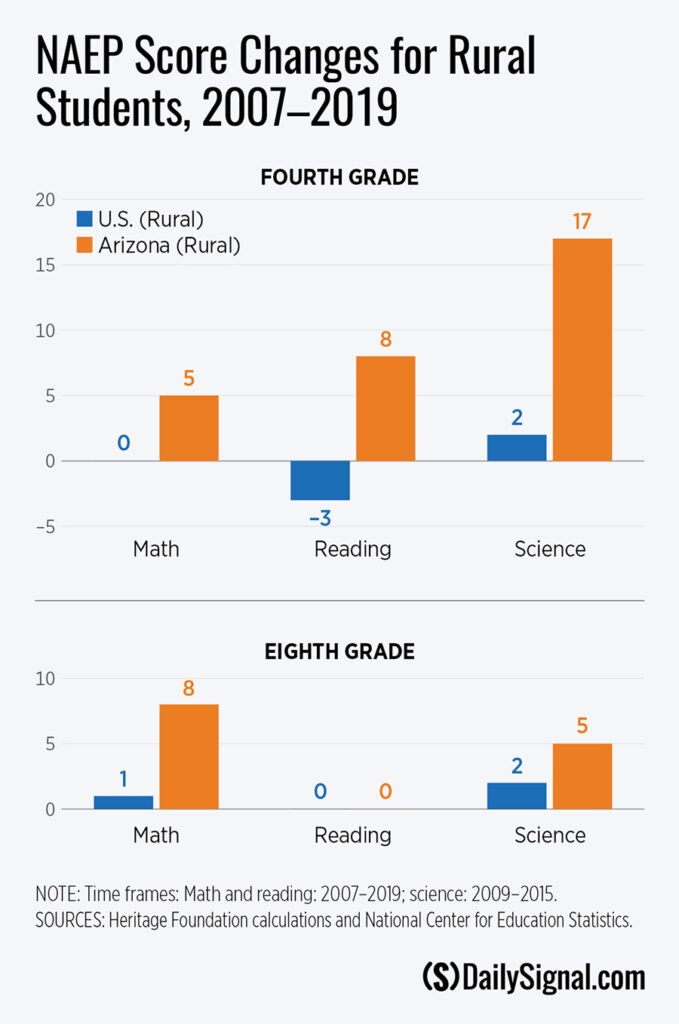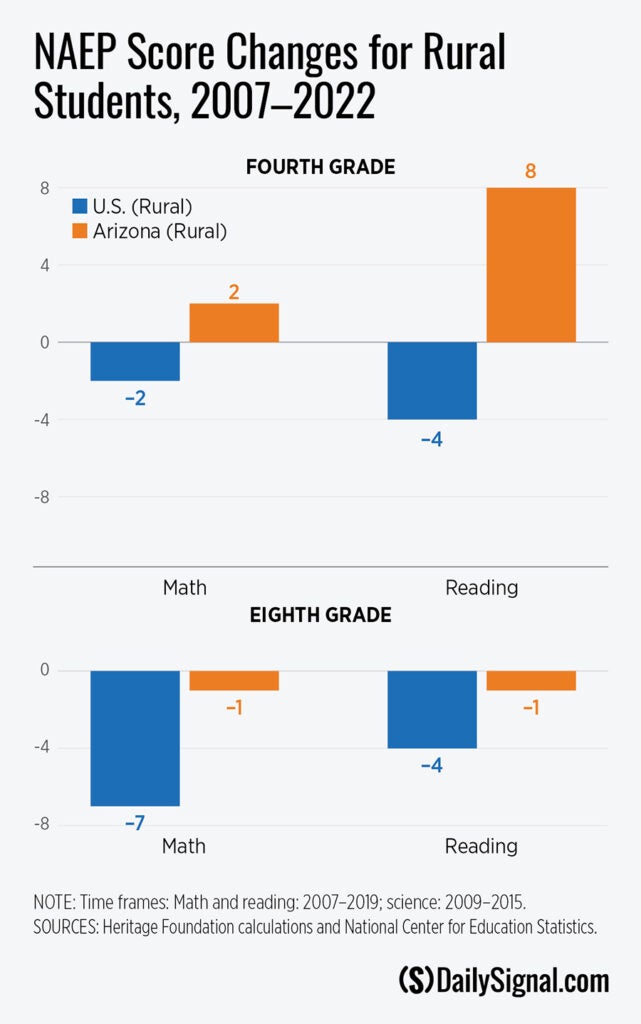As America celebrates National School Choice Week, two states—Iowa and Utah—have made the first moves this year to empower families with a greater say in how their children are educated. Additionally, the evidence from states with robust school choice policies is debunking opponents’ charges that choice harms rural students and homeschoolers.
Last week, the education committees in both the Iowa House of Representatives and Iowa Senate advanced Gov. Kim Reynolds’ education choice bill, the Students First Act, which would make K-12 education savings accounts, or ESAs, available to all Iowa families.
With an ESA, a family that opted their child out of the public school system would be able to access the state’s portion of per-pupil spending on public schooling—about $7,600—to use for private school tuition, tutoring, textbooks, curricular materials, special-needs therapy, and more.
In an open letter, Reynolds emphasized that most Iowans will likely continue to choose district public schools for their children. But the governor noted, “For families who otherwise can’t afford a private school that may be a better fit for their children, [the Students First Act] makes new opportunities attainable.”
On Friday, the Utah House of Representatives passed the Utah Fits All Act by a vote of 54-20. The bill would create multiuse scholarships worth about $8,000 annually for all K-12 students. The scholarships would work similarly to an ESA, except without the ability to save unused funds for future expenses. The measure also included a pay increase for district schoolteachers.
“I believe that supporting education means supporting the best approach for educating each individual child and our state,” said bill sponsor state Rep. Candice Pierucci. “So this bill works to emphasize a focus on individualized student learning and finding ways to give parents additional tools and options for their kids’ education.”
Last year, Arizona became the first state to offer ESAs to every student. In 2021, West Virginia enacted an ESA policy that’s open to all students switching out of a district school or entering kindergarten. Numerous other states are poised this year to follow their lead, including Arkansas, Florida, Iowa, Indiana, Ohio, Oklahoma, and Texas.
As The Wall Street Journal noted in an editorial this weekend, opponents of school choice are raising concerns about how these policies might affect rural school districts:
Public schools are sometimes the only option in rural areas and school choice will ruin them, the argument goes.
But as Corey DeAngelis recently wrote in these pages, rural districts have as much to gain from school choice as anywhere else. If public schools are truly the best, or the only, option, students won’t go elsewhere. A Heritage Foundation report recently documented that rural school districts haven’t suffered in Arizona, where school choice is flourishing.
(The Heritage Foundation is the parent organization of The Daily Signal.)
Indeed, not only have Arizona’s rural schools not shown signs of harm, they’ve actually improved considerably over the last two decades in Arizona’s robust school choice environment.
As described in the aforementioned Heritage report, from 2007 to 2019, Arizona rural students’ fourth- and eighth-grade reading and math scores on the National Assessment of Educational Progress increased by a combined 21 points while scores in rural schools nationally decreased by two points. In science, Arizona’s rural schools increased a combined 22 points while rural schools nationwide only increased by four points.

National Assessment of Educational Progress gains and declines for rural students, pre-pandemic.
On the most recent national assessment, post-pandemic, Arizona’s rural students were still up a combined nine points while rural students nationally dropped 17 points from 2007.

National Assessment of Educational Progress gains and declines for rural students, post-pandemic.
Others have raised concerns about the potential for education choice programs to lead to regulations on homeschooling. Government shekels, the argument goes, lead to government shackles. However, there are states with shackles but no shekels and others with shekels but no shackles.
All of the states that the Home School Legal Defense Association lists as “high regulation” when it comes to homeschoolers are states that lack an education savings account policy. Meanwhile, the states with the highest ESA participation—Arizona and Florida—are considered “low regulation” states by the association.
In weighing whether to support ESA policies, homeschoolers should examine how such policies have worked in states like Arizona that have had them for more than a decade. To that end, the Arizona-based think tank Goldwater Institute recently published an essay by Michael Clark, a homeschool dad whose family uses the ESA, about the experiences of homeschoolers in Arizona with the ESA.
Clark observed that the ESAs “have not encroached on homeschool freedoms,” but they have “provided life-changing services and resources for children with learning and developmental disabilities” and “encouraged educational entrepreneurship, leading to new and more affordable educational opportunities for all students, including homeschool students.”
The ESAs have also made it possible for many more families to educate their children at home, thereby strengthening the coalition of those willing to fight to protect homeschool autonomy.
Of course, the devil is in the details. It is crucial that education choice policies are well-crafted and ensure that homeschool autonomy is respected. Thus far, ESA policies have been designed to do just that.
Have an opinion about this article? To sound off, please email [email protected], and we’ll consider publishing your edited remarks in our regular “We Hear You” feature. Remember to include the URL or headline of the article plus your name and town and/or state.




























